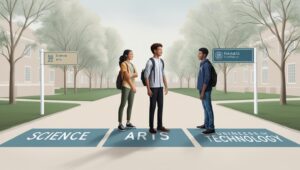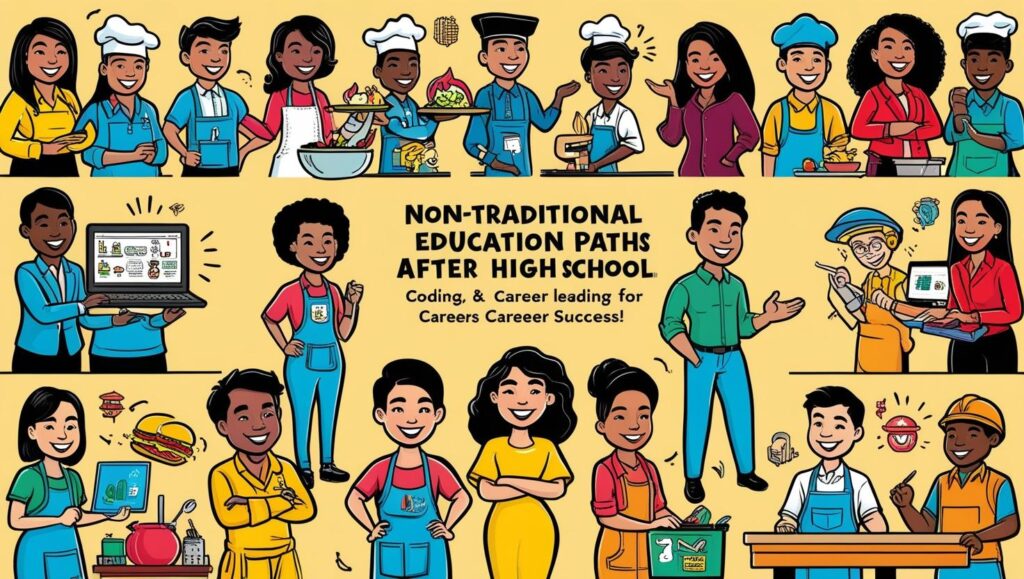The US continues to be one of the most popular choices for students looking to study abroad. The US education system provides countless opportunities for local and foreign students and is known for its prestigious universities, multicultural academic programs, and dynamic student life. This guide offers in-depth insights into the US education landscape, including the advantages, challenges, and how to take the first step in your academic journey.
A Guide to the US Higher Education System
U.S. higher education is characterized by flexibility, diversity, and innovation. In contrast to every other country I can think of, at least straight out of high school, students in the US are free to decide what their majors will be after the first couple of years of study. A college or university may provide various degrees from liberal arts and sciences to very specific professional degrees.
The community college, four-year college, and university system. Associate Degrees and Pathway to Four-Year Schools. Community colleges award degrees at the two-year level and act as a bridge to four-year colleges and universities. However, universities provide bachelor’s, master’s, & PhD programs. Accreditation is necessary for quality in education, and that is the most important thing to be assured of while you are choosing the institution, because you need to be assured that it is an accredited institution by the authorized agency.
How to Choose the Right Program for You in College

Choosing the right program is a key step in getting your graduate degree in the US. Majors are connected to future careers, so students should think about their career choices and academic proclivities before they select a major. Common areas of study in the US range from engineering, computer science, business administration, and healthcare to social sciences. Moreover, there is a rising trend of interdisciplinary programs and dual majors, which allow students to get a personalized academic path.
These can include their admission requirements and ways of structuring the curriculum. Some pay attention to a high degree of research and new inventions while others pay more importance to practical and job-oriented studies. Before choosing the Linguistics program, students can research the curriculum, faculty expertise, internship opportunities, and success of alumni.
How to apply to get in, Entry requirements
Applying to US colleges and universities can be extremely competitive, with international students facing even higher levels of competition. Typically required components are academic transcripts, standardized test scores (SAT, ACT, GRE, or GMAT), letters of recommendation, a personal statement or essay, and English language proficiency examination results (TOEFL or IELTS).
Deadlines differ from institution to institution and for different programs. Undergraduate programs operate on fall admission cycles, with deadlines typically in November through January. Graduate programs can have several intakes a year. It is recommended that you start preparing in advance and be diligent about dates and documentation needed.
Financing Your Education
There is no denying that the US can be an expensive place to go to school, but thankfully, there are more programs and options for financial aid that can help offset the costs. Students may also look into scholarships, grants, work-study programs, and assistantships available through universities, government agencies, and private organizations. International students may also be eligible for merit-based financial aid, though competition for these awards can be stiff.
Most schools have financial aid calculators on their websites to estimate the cost of attendance such as tuition, housing, books and living expenses. Besides budgeting, part-time work can be a way to ensure that students manage money well during the studies.
Life as a Student in the US
Student life in the US is more than Education. Campuses are communities full of extracurricular activities, cultural events, clubs, and leadership opportunities. Through this vibrant atmosphere, students practice social skills, establish professional relationships, and immerse themselves in American culture.
Living in dorms or student housing could present an opportunity to meet people from diverse backgrounds. On the other hand, off-campus living offers more independence too, as it is also very common, especially among graduate students. Libraries, research centres, sports facilities, and counselling services are available to assist students on their journey.
Career Prospects and Aftercourse Opportunities

The education system of the US is well associated with employment markets which gives its students an advantage in facing global job competition. A lot of degree programs will have internship components, co-op education and career services so that going into the real-world is easier. In some fields like STEM (Science, Technology, Engineering, and Mathematics), the job placement rate is excellent.
Various options, such as OPT (Optional Practical Training) and CPT (Curricular Practical Training), are available for international students studying in the US, which permit students to work in their area of expertise for some duration after they complete their studies. To remain longer, an employer-sponsored visa or, even better, further study is the way to go.
Conclusion Regarding Studying in America
Studying in the US, pursuing higher education is a life-changing pathway, you can gain unique experience in education that will only enhance your personal and professional development. Though the process requires planning, preparation and a fair amount of cash consideration, the benefits are tremendous. Attracting students from across the globe for its quality education, coupled with diverse college programs and an environment conducive to learning, the US has proven to be a top destination for many who seek to further their studies.
Education in the us can be the key to a future full of possibilities, and by taking the time to research, prepare strong application materials, and keep an open mind, students can make their way there.



